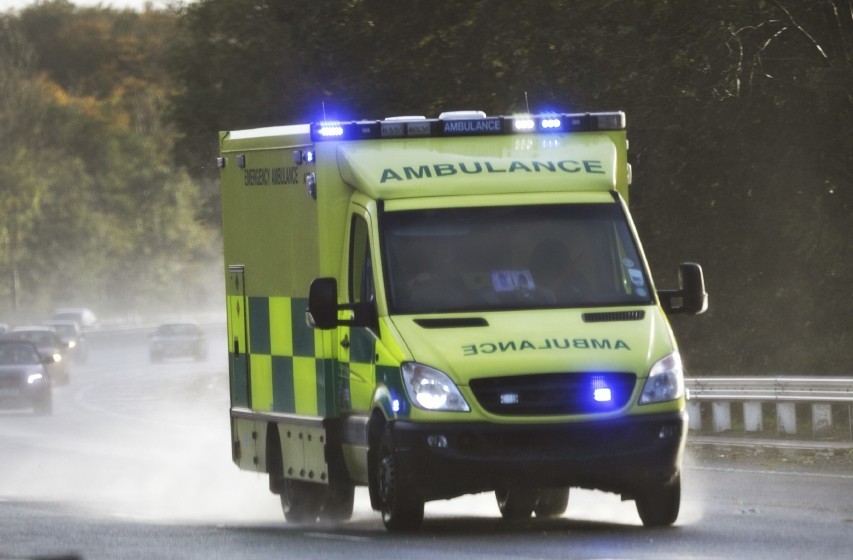
A Sunday Post probe has uncovered damning evidence the Scottish Ambulance Service (SAS) is in the grip of a performance meltdown.
We can reveal crews ordered by law to get to 75% of the most serious incidents within eight minutes have managed to meet just 66% of call-outs so far this year.
Our probe also shows –
- Soaring numbers of patients with serious but not life-threatening injuries are being left without medical help.
- A staff survey found just 15% of employees thought there were enough staff to do the jobs properly.
- Evidence of unrest with a big increase in the number of staff planning to quit in the next 12 months.
The latest SAS performance data was leaked by an insider worried the service has “failed consistently since April 2015 to meet response targets”.
Among the most disturbing revelations in the document is the service’s plunging performance dealing with Category A calls.
Laws set by the Scottish Government state crews must get to 75% of these life-and-death situations within eight minutes, to give the patient the best chance of surviving.
Ambulance chiefs were criticised for achieving just 72.2% during 2014/15 and they vowed to redouble their efforts.
However, we can reveal the performance has deteriorated with just 66.4% of calls met in the timeframe between April 2015 and this month.
The declining performance dates back to June 2015 when it first slipped below 70% and it has continued to get worse, with just 60.6% of Category A calls answered within eight minutes in December and 62% during the first part of January.
Meanwhile, Category B calls, considered serious but not life-threatening, are also down.
Under-pressure medical staff must get to 95% of these incidents within 19 minutes and, after achieving 87.8% last year, it has slipped to 83.2% this year.
READ MORE
Ambulance crisis: 999 call handler’s letter reveals staff are at breaking point
Diaries of ambulance technicians and paramedics: Struggles of service laid bare
Scottish Conservative health spokesman Jackson Carlaw said patients deserve better.
“The SNP is in charge of health, and therefore the Scottish Ambulance Service,” he said. “It must explain why this performance is so poor.”
Last year The Sunday Post revealed the pressure ambulance staff faced on a daily basis.
Now, results from the brigade’s own internal staff survey have mirrored these worrying trends.
More than 1,600 employees responded to the 2015 questionnaire but only 15% said there were enough staff for them to do their jobs properly.
Just 53% said they were able to do their job to a standard they were pleased with, a drop of 13 percentage points on 2014, and only 39% of employees said care of patients was the ambulance service’s top priority – down from 49%.
Most worrying was evidence there could be widespread departures over the next 12 months, which would pile even more pressure on the service.
Asked whether they intended to be at the Scottish Ambulance Service in 12 months’ time, just 64% of workers said ‘yes’, compared with 76% last year.
Karen Leonard, GMB’s Scotland Organiser for the SAS, said: “The workload imposed on staff makes it inevitable more and more suffer from fatigue and stress.
“In any place of work this would be unacceptable, in an integral part of our National Health Service it is nothing short of disgraceful.”
An SAS spokesman said: “The volume of Category A potentially life-threatening calls has increased significantly. However, patient outcomes continue to improve, as shown by a record increase in resuscitation rates.
“While response times are an important aspect of pre-hospital care and fluctuate, the clinical expertise of ambulance teams is key to good patient outcomes and saving lives.
“Response times are monitored and are affected throughout the year by factors including peaks in demand, extreme weather and road closures, as well as
turnaround times at hospitals.
“The current average response time to a Category A life-threatening call is around seven minutes in Scotland.
“Recent additional funding from the Scottish Government will be invested in 300 new paramedics over the next five years, as well as initiatives to improve patient care.
“Staff welfare is a priority and we operate with a strong culture of openness, with management teams regularly meeting staff-side representatives.”
Scottish Government Health Secretary Shona Robison added: “Despite attending an increasing number of incidents, the SAS is saving the lives of more patients than ever.
“However, we’re aware the service has been experiencing higher demand for Category A calls, and we’re working with them to put in place improvements to response times.
“This includes the use of hospital liaison officers to improve turnaround times at hospitals, additional clinical support at ambulance control and extra frontline staff.
“We’re committed to increasing the Scottish Ambulance Service’s budget by £11.4m, or 5.4%, in 2016/17 – which will see around 300 extra paramedics recruited over the next five years.”

Enjoy the convenience of having The Sunday Post delivered as a digital ePaper straight to your smartphone, tablet or computer.
Subscribe for only £5.49 a month and enjoy all the benefits of the printed paper as a digital replica.
Subscribe